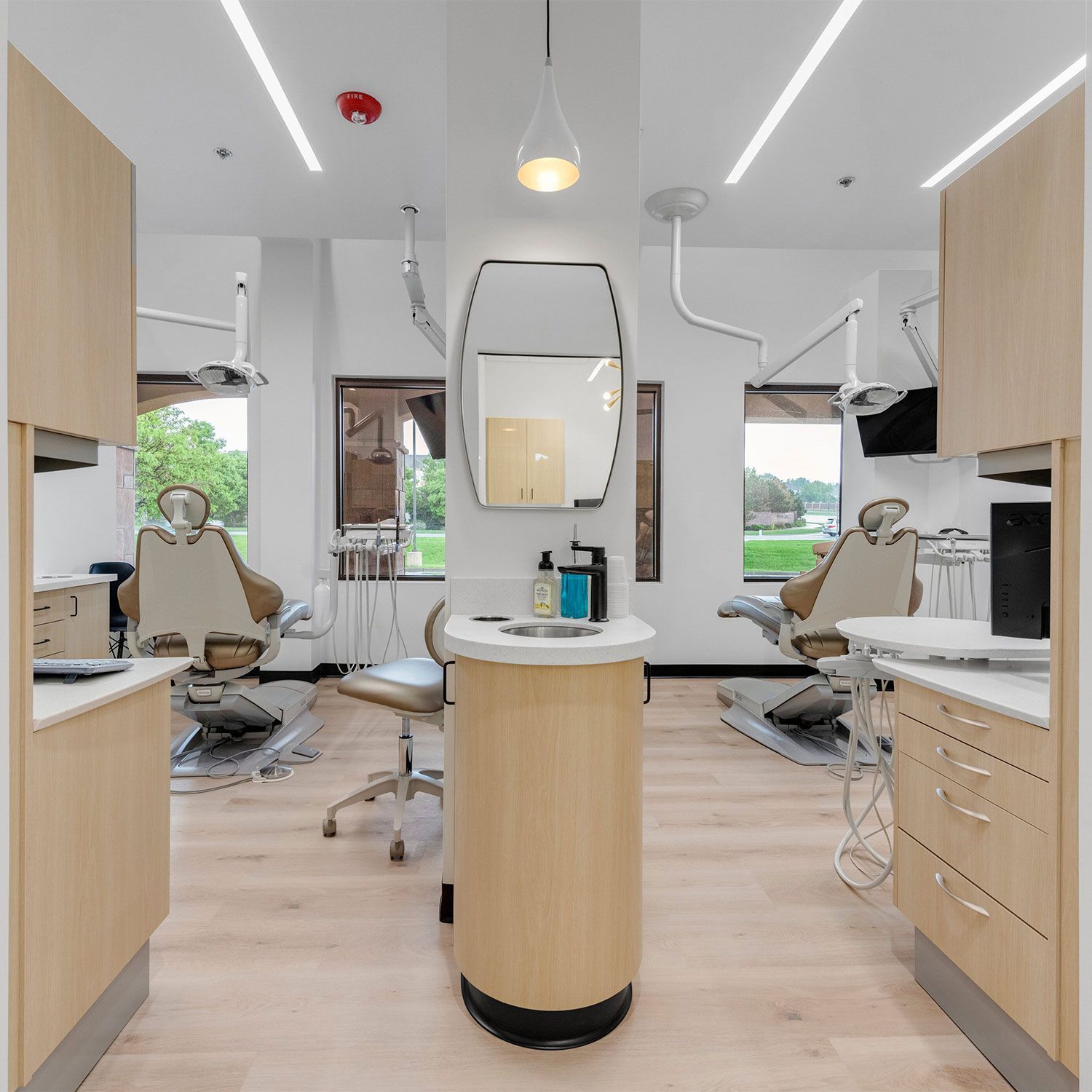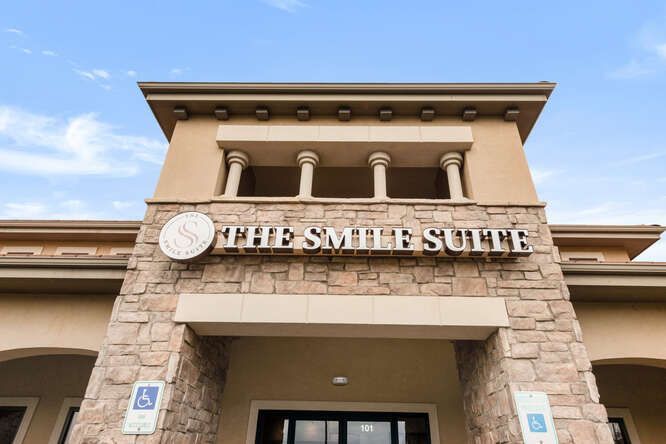GUM CONTOURING
GUM CONTOURING AT THE SMILE SUITE
Gum contouring is a procedure that can change the shape and size of your gum line. It is also called gingival sculpting or gingivoplasty. This procedure can help people who feel self-conscious about their gumline, whether high, low, uneven or somewhere in between. If you are interested in changing the appearance of your gumline, gum contouring may be an option.
This cosmetic dental procedure involves altering the shape and size of the gumline. A dentist may recommend it if the gums are too high and affect your oral health. However, it can also be performed for cosmetic reasons, such as to even out an uneven gumline or improve the appearance of a person's smile.
If you have gums that don't rest at the right level on your teeth and you are not satisfied with your smile, you may qualify for gum contouring surgery.

CAUSES OF UNEVEN GUMS
Various factors can contribute to the alteration of gumline height, either making them recede or protrude excessively. Both these factors could be either an inherited characteristic, an indication of a specific health issue, or an unintended side effect of certain medications.
The appearance of elongated teeth is commonly caused by a condition known as gum recession, in which the gum tissue retreats from the root and exposes the tooth. This creates an unsightly appearance and can lead to destructive dental issues like decay and potential tooth loss. Furthermore, gum recession might indicate periodontal disease, which is a weakening of the tooth's supportive structures (bones and gums).
COMMON QUESTIONS ABOUT GUM CONTOURING
Often time this procedure is done by a board certified gum specialist. The benefits to gum recontouring include:
-
IS GUM CONTOURING SURGERY NECESSARY?
The reshaping of gums through gum contouring is often viewed as a cosmetic enhancement because it aims to improve the patient's smile. In most cases, though, the procedure is not deemed medically necessary. However, certain instances might be performed as part of other vital periodontal treatments such as regenerative treatments, crown lengthening, or pocket reduction.
On the other hand, there are gum contouring treatments that are not classified as cosmetic. For example, excessive gum tissue in areas of recession and removing excess gum tissue that has obscured a portion of the visible tooth surface are not considered cosmetic procedures.
-
WHO PERFORMS GUM CONTOURING?
Most general dentists and specialized periodontists are capable of performing gum contouring. Before undergoing the procedure, it is recommended to consult your dentist and inquire about their proficiency and familiarity with the process.
-
HOW MUCH DOES GUM CONTOURING COST?
Gum contouring costs can vary depending on the scope of the treatment. It is advisable to have a conversation with your dentist and inquire about the cost of your personal needs. Generally, gum contouring is not covered by dental insurance.
-
WHAT TO EXPECT DURING GUM CONTOURING PROCEDURE?
The Gum contouring treatment is typically performed in a dental office and includes various tools such as scalpels and laser devices. It is suggested to consult with your dentist and determine which method would be most fitting for your specific needs.
Before the surgery, your dentist will explain the details of the procedure. Also, dentists usually outline the reshaped gum line to show you how much tissue will be extracted or reshaped.
Then, a local anesthetic will be administered to the area to reduce discomfort. In some instances, it may be necessary for the dentist to remove some of the bone at the front of the tooth's root to achieve optimal long-term results during the contouring procedure.
-
HOW LONG IS THE RECOVERY PERIOD AFTER GUM CONTOURING?
The healing process for gums can range from a couple of days to weeks. In the days following surgery, it is recommended to relax and avoid strenuous activities. The dentist will also provide specific instructions on how to facilitate the recovery process. Here are some basic guidelines:
- To alleviate pain, you can take over-the-counter pain medications like Tylenol or Advil, as advised by your dentist. Aspirin should be avoided as it induces bleeding.
- It is best to stay away from spicy foods and anything containing seeds while your gums heal. Additionally, your first few days after surgery should be spent eating soft, cool foods. These include pasta, eggs, yogurt, cottage cheese, ice cream, and soft vegetables. As soon as your teeth have healed, brush them in accordance with your dentist's instructions.
If you experience excessive swelling, bleeding, or any other concern after the procedure, it is best to contact your dentist immediately.
-
WHAT ARE THE RISKS INVOLVED IN GUM CONTOURING?
As with any surgical procedure, there are certain risks involved with gum contouring. These risks may include the rare possibility of an adverse reaction to the anesthetic used and the recurrence of gum tissues.
If you have concerns about your gums and teeth, it is wise to discuss gum contouring with your dentist. However, it is essential to remember that, like any cosmetic surgery, the outcome largely depends on the practitioner's expertise. Hence, it is necessary to thoroughly research and choose a dentist you feel most comfortable with, specifically with their cosmetic dentistry training and experience. You can ask for photos of their past work and ensure their results match your expectations.
CLIENT REVIEW

I have been looking for an amazing dentist office for sometime and was thrilled to meet Dr. Nicholson. She was kind, personable, very professional and very detail oriented. Having a dentist who truly cares about your dental health and their patients is a breath of fresh air. I am so glad I got to meet Dr. Nicholson and her team.
Michelle Renee

Dr.Nicholson and her staff are the best of the best! Jenna is fabulous with what she does. Very calm modern office makes you feel so comfortable.
Mayra Ramos

Dr. Nicholson's practice is full spectrum. Whether you are needing personalized service or a place for your whole family, The Smile Suite provides a state of the art, pristine and welcoming atmosphere. Jenna keeps pace with the latest dental technology and performs exceptional dental care.
Megan and Jeremy

I have been a patient of Dr Nicholson for several years and she is very skilled. She listens, takes time, and is aware of what's new in dentistry and what is necessary vs not necessary. Her work is exceptional. I have recommended her to friends.
Ginney Hitchon

Our family has been seeing Dr. Nicholson for years. Jenna is fabulous at what she does... She is very caring and puts the patient first. She will listen to all your concerns and help you make the best informed decisions. Dr. Nicholson has the most up to date technology and is very skilled in what she does. Not only is Jenna a truly amazing dentist but The Smile Suite is an absolutely stunning and comfortable place to receive dental care. We trust her with our own dental needs and our children's.
Morgyn Hood

I chose to switch dentists after almost a decade. I was very nervous about my appointment since I had been neglecting to floss for some time. I was immediately put at ease. Dr. Nicholson spent time talking with me and genuinely cared about my concerns. The staff was professional and friendly. The office was comforting and incredibly clean. Dr. Nicholson is quite clearly talented in both dentistry and service.
Devon Torres
QUICK LINKS
Providing beautiful healthy smiles and personalized service
Join our newsletter and find out more 720-679-9689
Contact Us
We will get back to you as soon as possible
Please try again later

| All Rights Reserved | The Smile Suite | Designed by Lingows